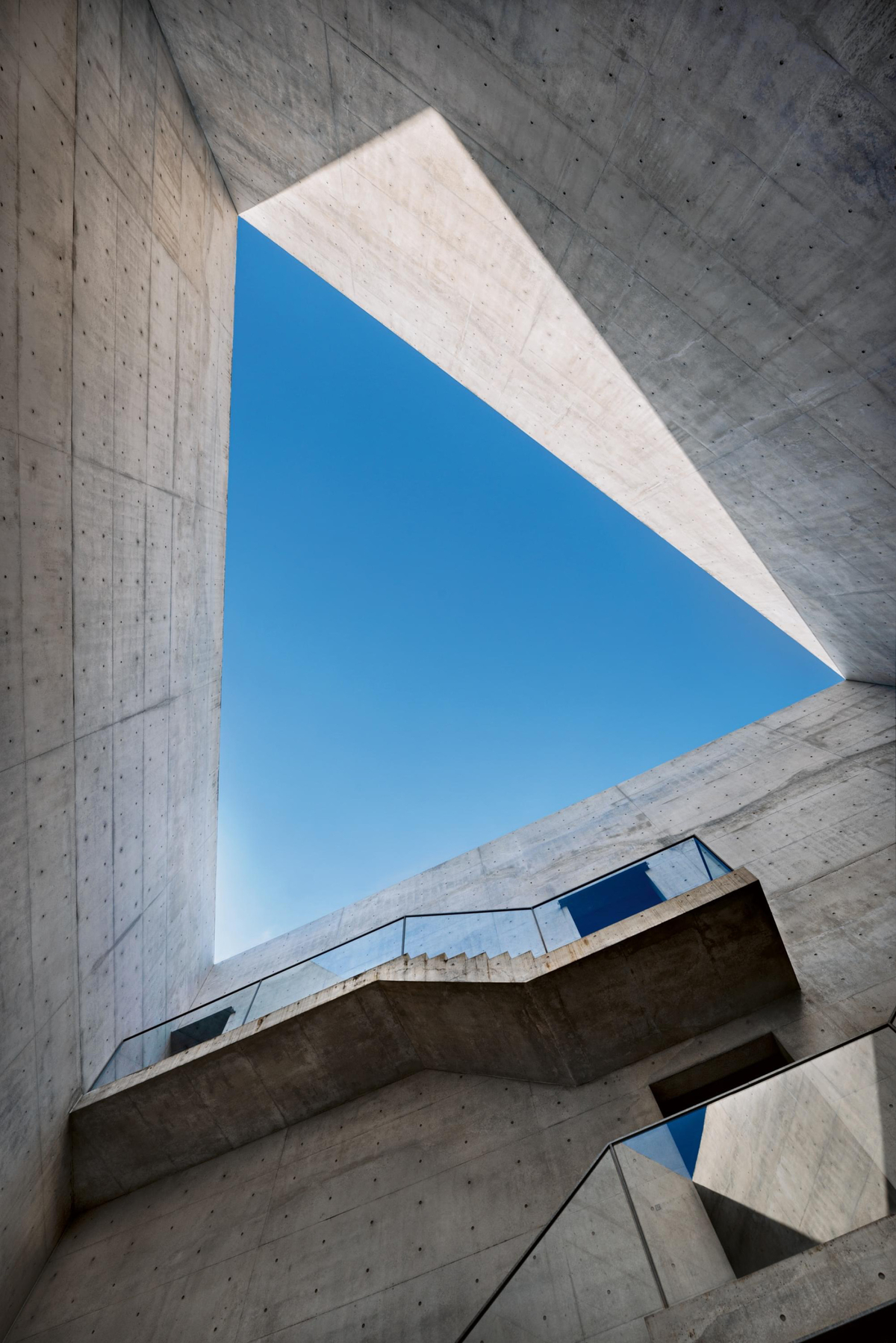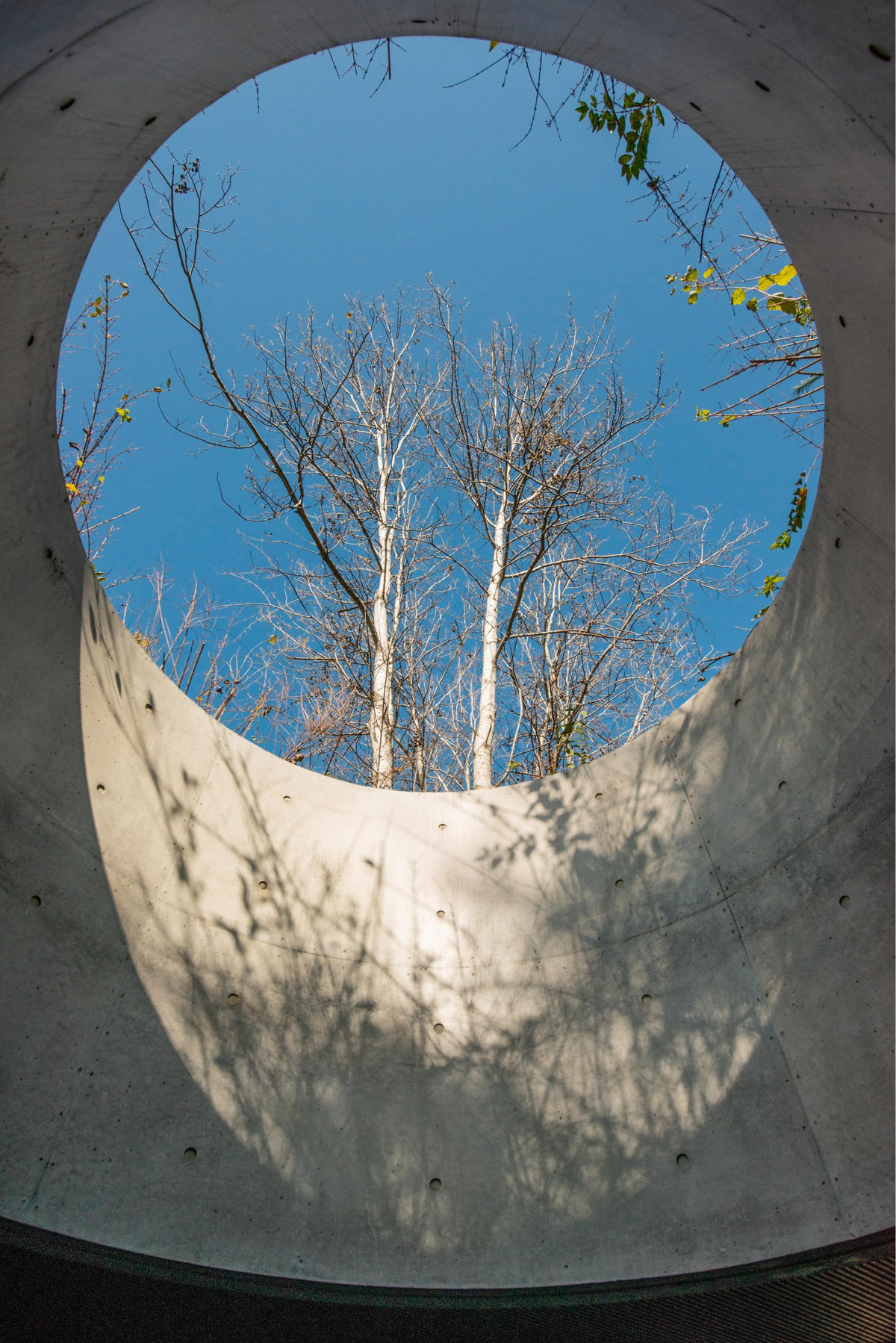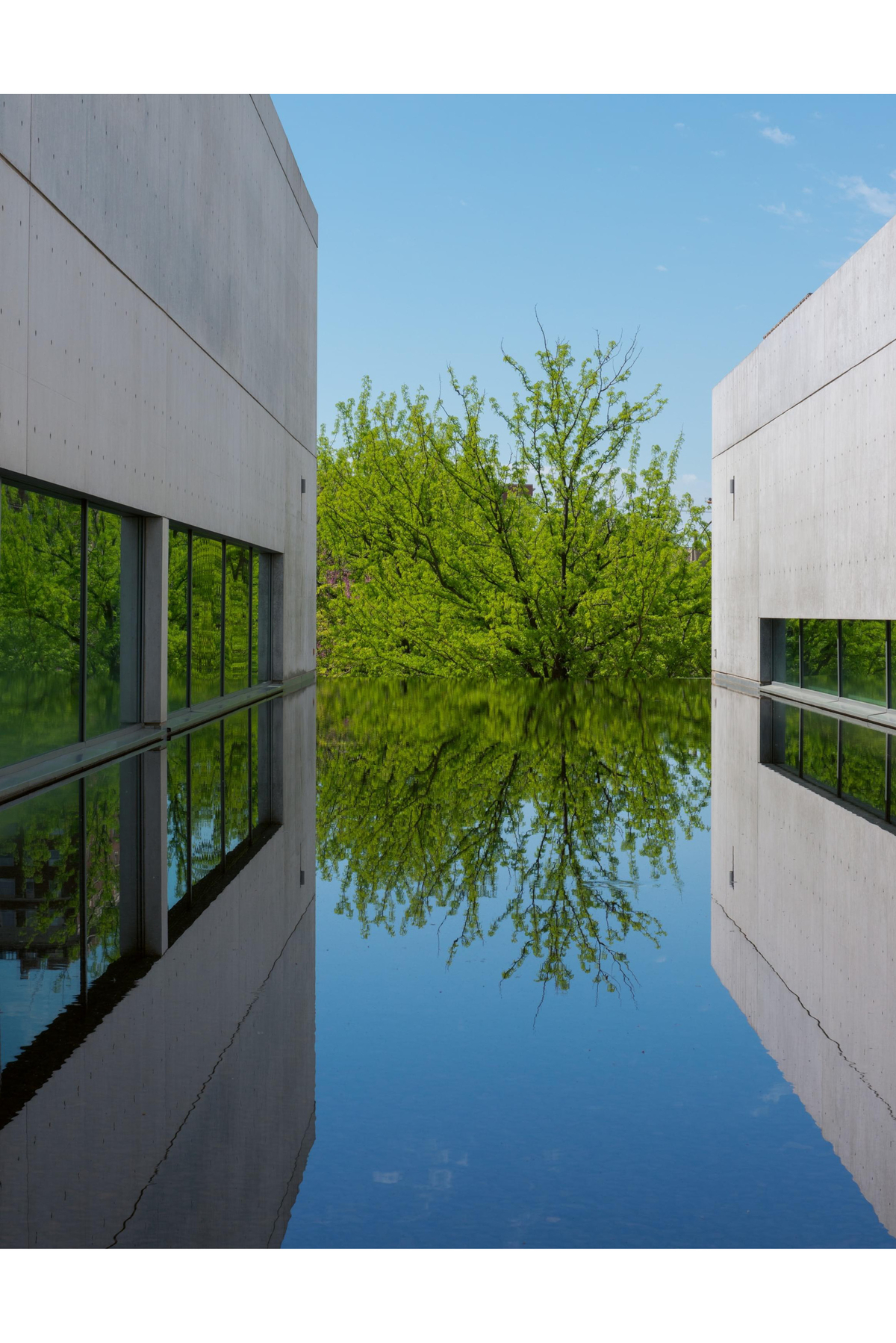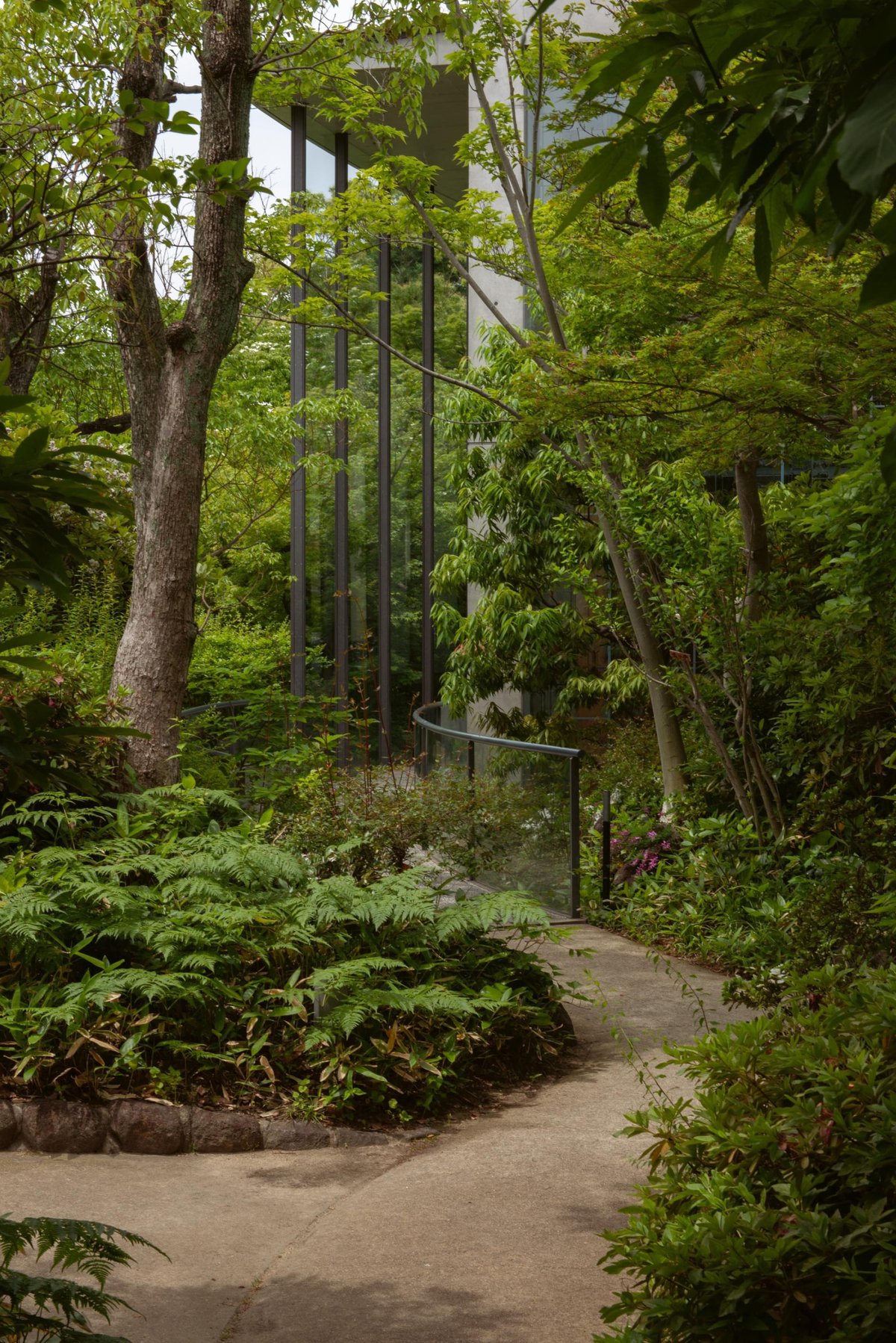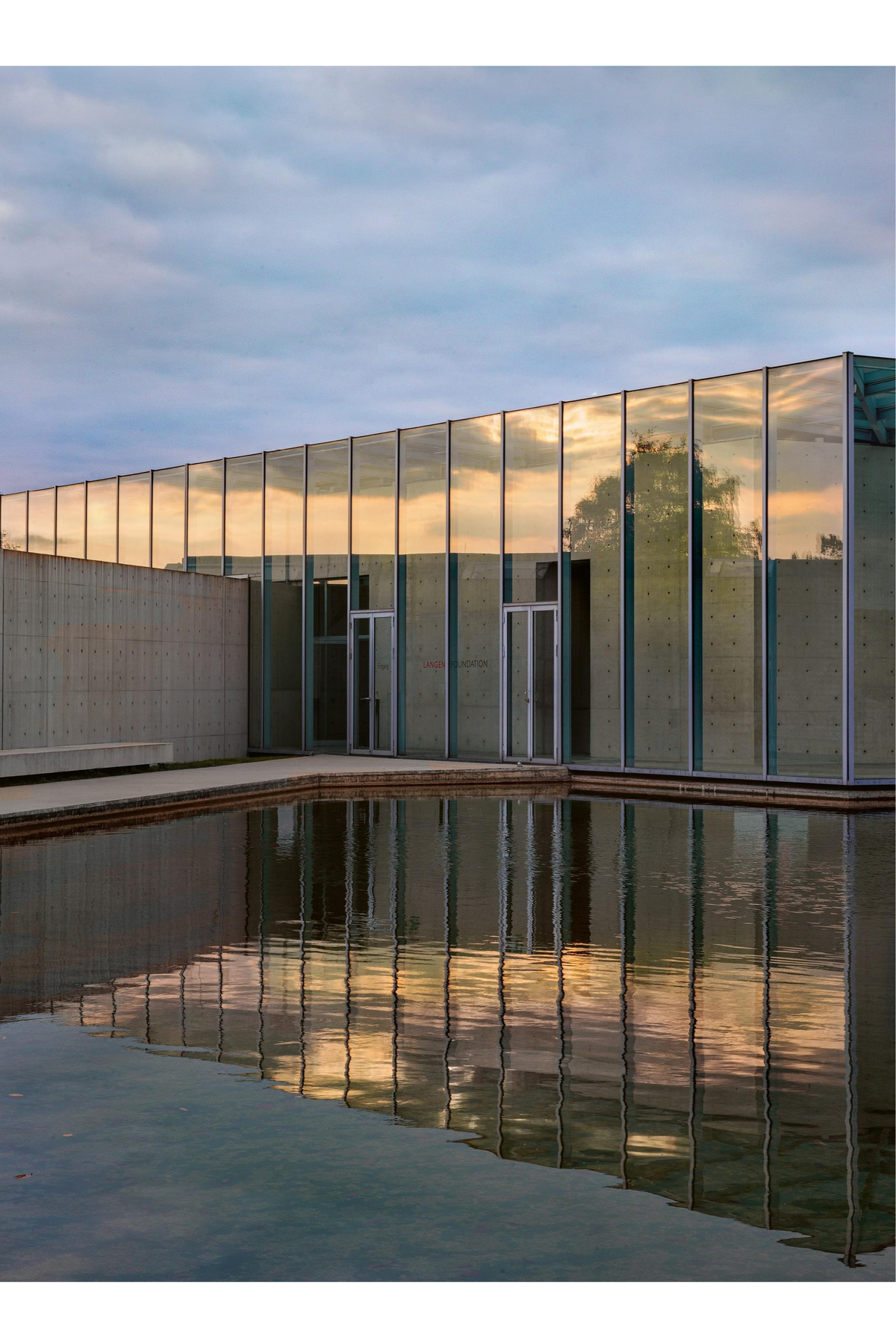Over 50 years ago, Tadao Ando watched people at prayer within Le Corbusier’s Notre-Dame du Haut, a Roman Catholic chapel. A blinding ray of light poured down from above, illuminating the congregation. “It was a sublime yet gentle light that embraced the praying souls,” Ando said. “I knew then that this was the scenery of hearts I had been striving for—and that architecture could be realized solely through aspiration toward the light.”
Ever since, Ando has upheld a principle of delicacy. Space, he has said, is “as delicate as silk fabric.”
That concept is intrinsically Japanese. Consider how sliding doors, or shoji, make less noise than a feather when opened and closed, and the way geometry seems to crystallize Japanese rooms—an approach that helped shape Western modernism.
Ando grew up before all that. Born in Minato-ku, Osaka, in 1941, he spent his teen years in an indelicate place: the boxing ring. On a high-school trip to Tokyo, however, he saw Frank Lloyd Wright’s Imperial Hotel and was mesmerized by its bold lines. Two years after graduating, Ando began night classes in drawing and interior design, saving what he could to travel and see the architecture of the greats—Le Corbusier, Mies van der Rohe, Louis Kahn. In 1968, he returned to Japan and opened his own studio, Tadao Ando Architect & Associates.
Ando’s work has stayed true to that epiphany at Notre-Dame du Haut. Cast-in-place concrete, open courtyards, reflecting pools—all harness the transformative power of natural light. Often these elements are arranged to slow movement through space, forcing the body into contemplation so that the mind can follow. The result is buildings that possess a sacred stillness. In 1995, Ando won the Pritzker Architecture Prize.
A new book, Tadao Ando: Light and Space, brings together photographs of Ando’s work taken by Richard Pare. They include the Modern Art Museum of Fort Worth; the Pulitzer Arts Foundation, in St. Louis; the Bourse de Commerce, in Paris; and the magnificent Church of the Light, a stark concrete chapel in Osaka that’s illuminated by a cruciform cut in the wall behind the altar. Natural light pierces the space.
“I know of no other photographer who captures architecture with such intelligence, sensitivity, and affection,” Ando writes in the foreword. “I consider my encounter with him one of the most fortunate moments of my life.” —Elena Clavarino
Elena Clavarino is the Senior Editor at Air Mail

